Managed Futures: The Empire Strikes Back
Evaluating managed futures ETFs
October 2022. Reading Time: 10 Minutes. Author: Nicolas Rabener.
SUMMARY
- The AUM in managed futures ETFs has increased six-fold to $1.2bn in 2022
- However, the performance of these ETFs was highly dispersed
- Some have low correlations to the managed futures benchmark index, which is problematic
INTRODUCTION
A snapshot of the performance of asset classes in year-to-date 2022 highlights a world of pain. Stocks, bonds, real estate, private equity, and venture capital all generated negative returns. Almost every investor will have lost money.
The only major asset class that is in the green is commodities, although less than perhaps expected as the return of the S&P GSCI Commodity Index is barely positive for the year. The long-term performance of commodities has been negative, which makes it difficult for most investors to maintain consistent exposure to this asset class.
However, managed futures products, also known as CTAs or trend following strategies, provide exposure to rising and falling commodities, as well as other asset classes, which is more palatable for most investors. There have been a few ETF launches that provide access to this strategy, which allows even retail investors to add these to their portfolios (read Managed Futures: Fast & Furious vs Slow & Steady).
Unfortunately, ETFs and liquid alternative mutual funds often do not provide the same characteristics as the underlying products they are based on. In this research article, we will evaluate the performance of managed futures ETFs.
OVERVIEW OF MANAGED FUTURES INDUSTRY
We focus on managed futures ETFs trading in the U.S. stock market, which only includes the following fives products: WisdomTree Managed Futures Strategy Fund (WTMF), First Trust Morningstar Managed Futures Strategy Fund (FMF), iM DBi Managed Futures Strategy ETF (DBMF), KFA Mount Lucas Index Strategy ETF (KMLM), and Simplify Managed Futures Strategy ETF (CTA). WTMF was launched in 2011, so has a meaningful track record, while CTA was launched in 2022 and therefore lacks sufficient data for analysis.
The combined assets under management of these ETFs was only $200 million in 2020, but has increased to $1.2 billion as of today. Despite only having launched in 2019, DBMF has captured 55% of the assets. It is worth highlighting that this product can be viewed as an index tracker as it aims to replicate the returns of the largest managed futures hedge funds, rather than measuring the strength of trends of asset classes itself. DBMF charges a management fee of 0.85%, which is mid-way between the cheapest at 0.65% (WTMF) and the most expensive at 0.96% (FMF).
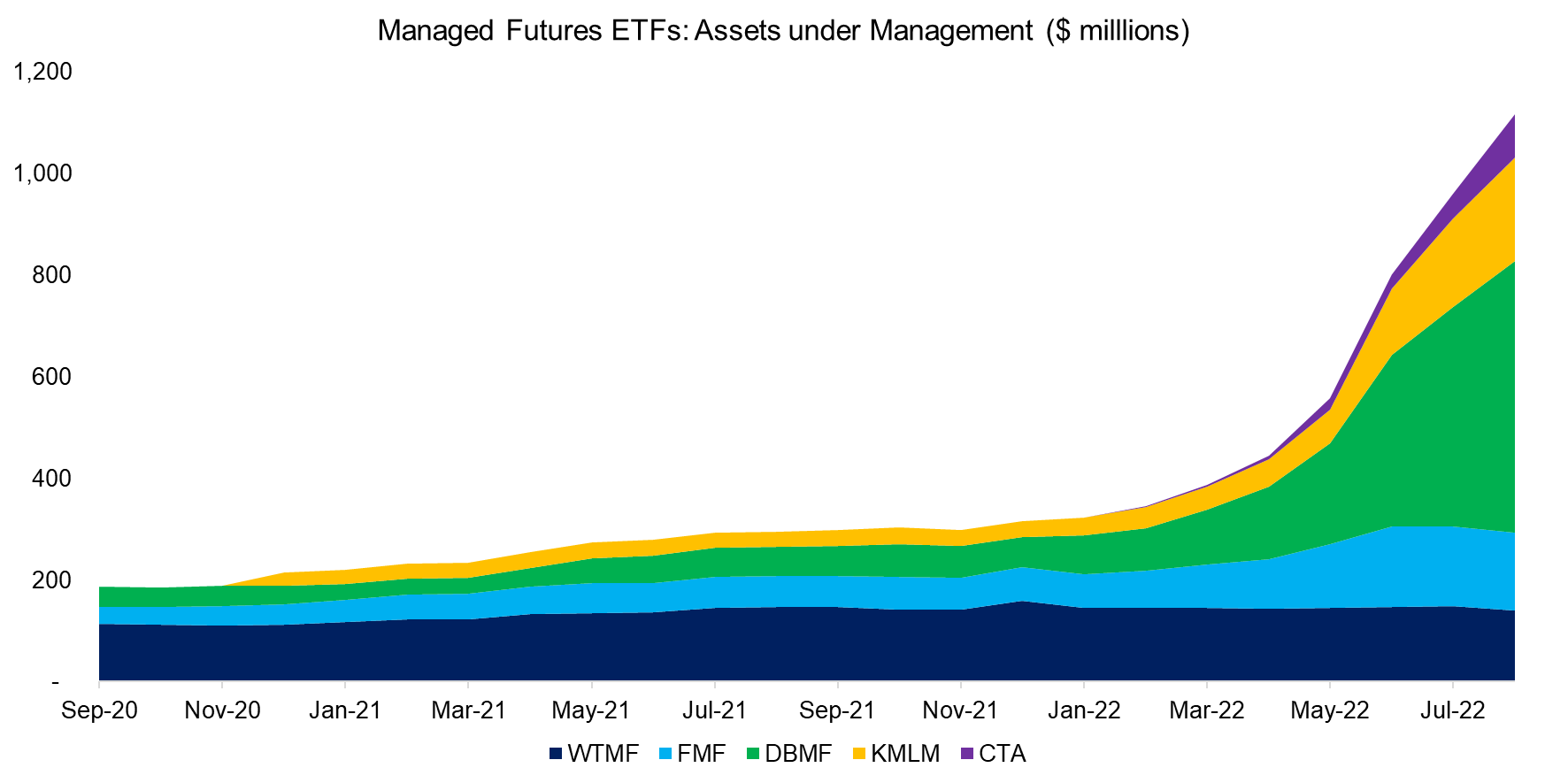
Source: Finominal
However, despite managed futures increasing their assets under management by more than six-fold in 2022, this still represents less than 1% of the assets managed by managed futures hedge funds (CTA industry). The assets of the latter have only increased slightly to $388 billion as of the second quarter of 2022, compared to $321 billion as of 2012, as per BarclayHedge.
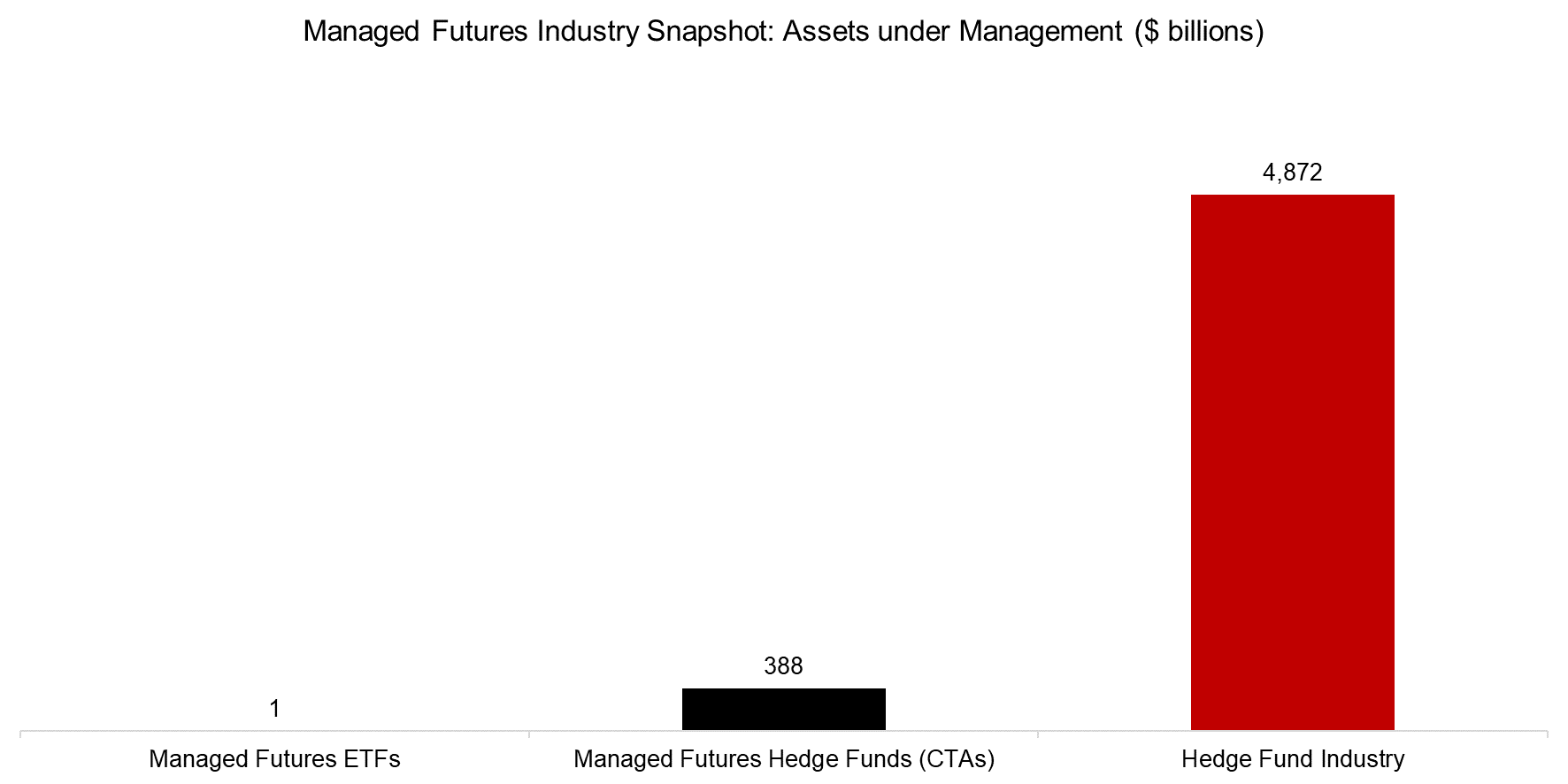
Source: Finominal
DIVERSIFICATION BENEFITS FROM MANAGED FUTURES
The entire managed futures industry represents only approximately 8% of the entire hedge fund industry, which manages $4.9 trillion as per BarclayHedge data for the second quarter of 2022. This is ironic as hedge funds provide far fewer diversification benefits than managed futures.
The correlation of hedge funds as measured by the HFRX Global Hedge Fund Index (HFRXGL) from HFR Research to the S&P 500 was 0.7 in the period from 2003 to 2022. Stated differently, there was relatively little hedging going on and most hedge funds provided nothing more than diluted equities exposure.
In contrast, the average correlation of managed futures hedge funds as measured via the SG Trend Index, which is one of the benchmark indices, was only 0.1 over the same time period. These uncorrelated returns imply potential diversification benefits for traditional equity-bond portfolios (read Hedging via Managed Futures Liquid Alts).
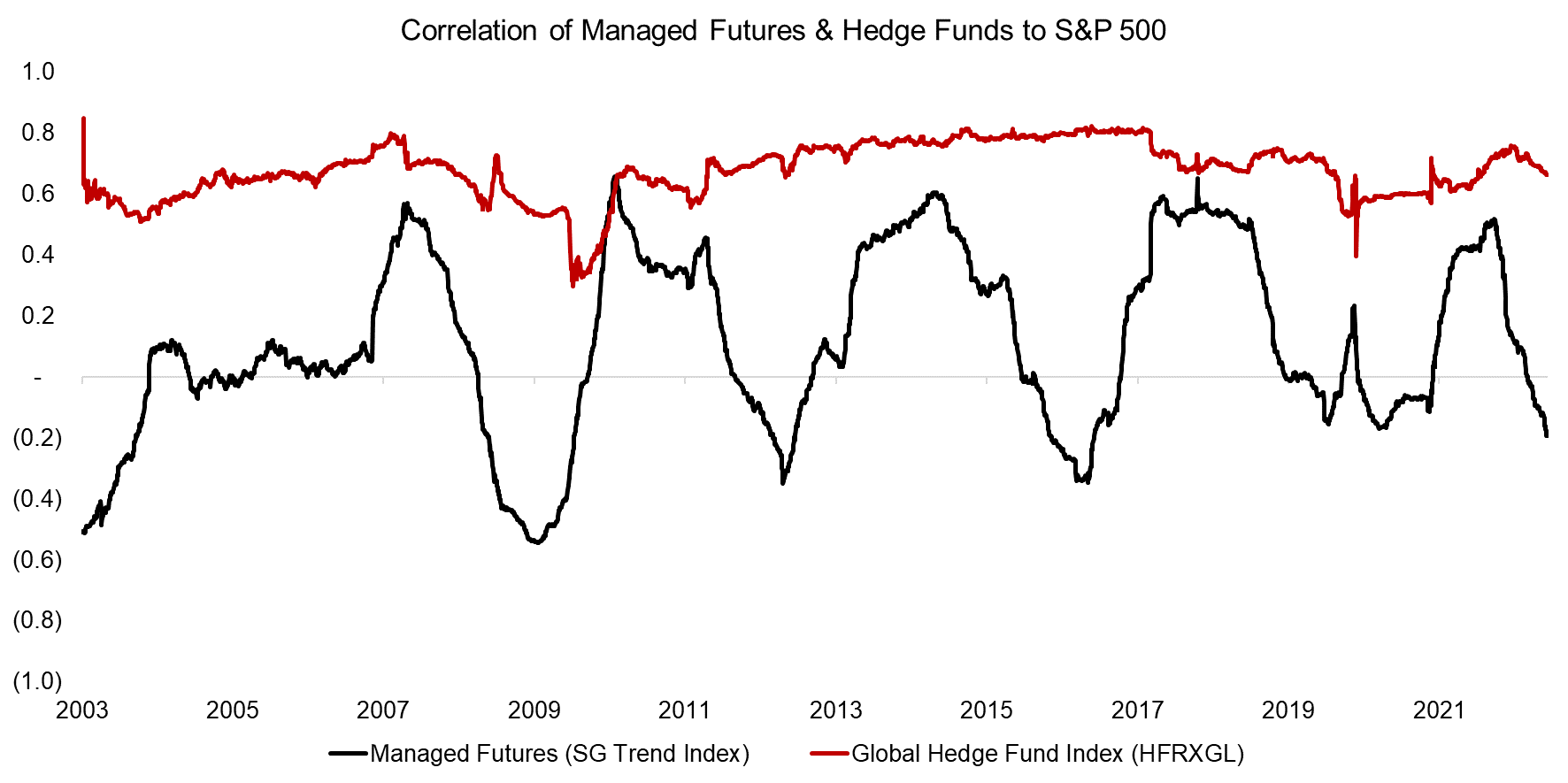
Source: Finominal
MANAGED FUTURES ETFS VS MANAGED FUTURES HEDGE FUNDS
Buying a managed futures ETF is far easier than investing in a managed futures hedge fund, but the expectation is that both provide the same exposures.
We measure the correlation of the ETFs to the SG Trend Index, which highlights diverse results. KMLM offered the highest correlation on average at 0.7, whereas the rest only offered approximately 0.5. The analysis highlights that the two products with long-term track records, namely WTMF and FMF, did not track the managed futures hedge funds particularly closely.
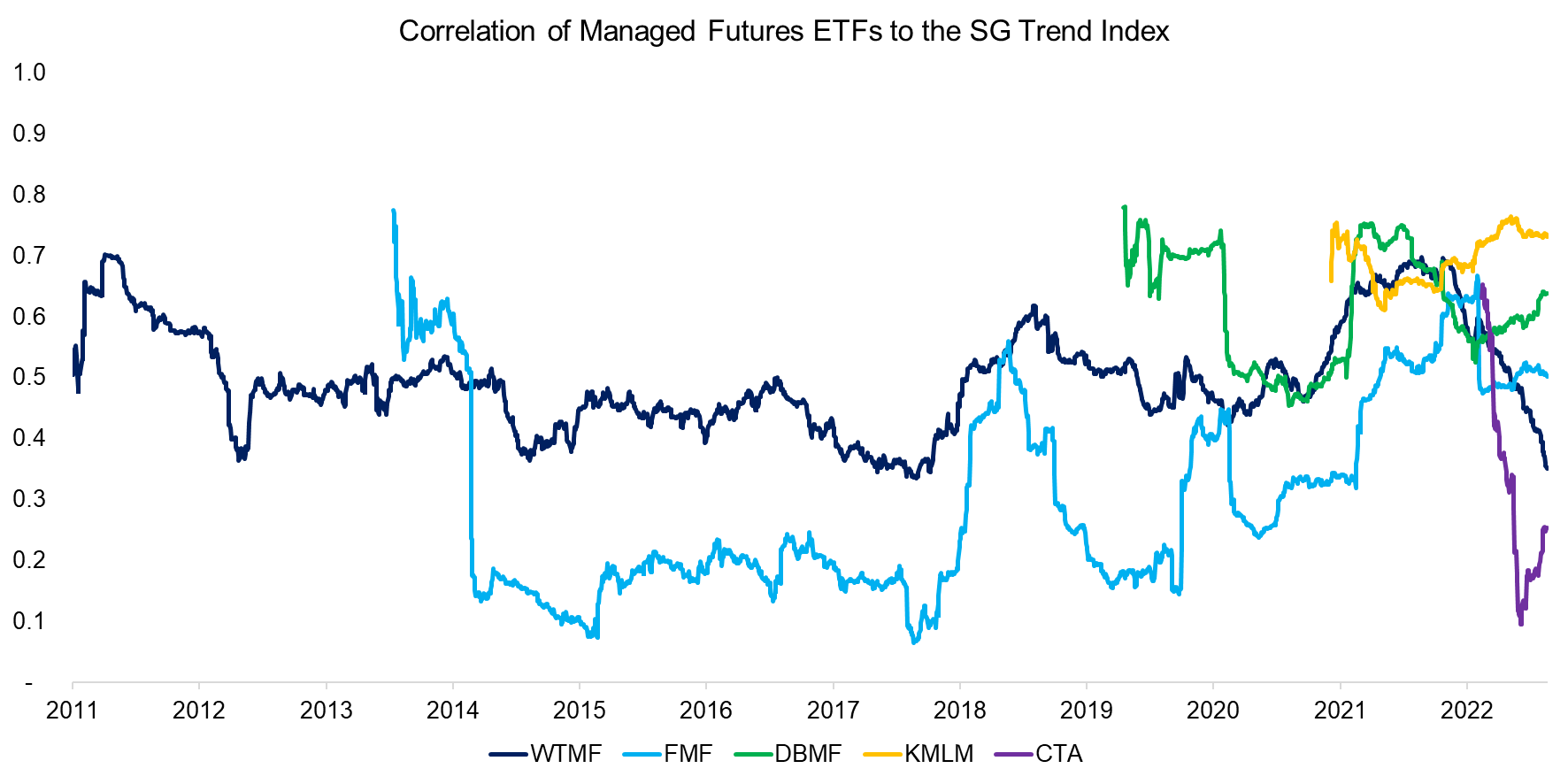
Source: Finominal
PERFORMANCE OF MANAGED FUTURES ETFS
The year 2022 highlights the case for well-diversified portfolios as the S&P 500 lost 22% year-to-date. Hedge funds failed to generate positive returns, compared to managed futures hedge funds that increased by 35%.
However, the lack of correlation of managed futures ETFs to the SG Trend Index is mirrored in their performance. Only DBMF and KMLM have comparable returns, while WTMF even lost money. The CTA ETF was only launched in March of 2022, so does not have enough data for a meaningful comparison.
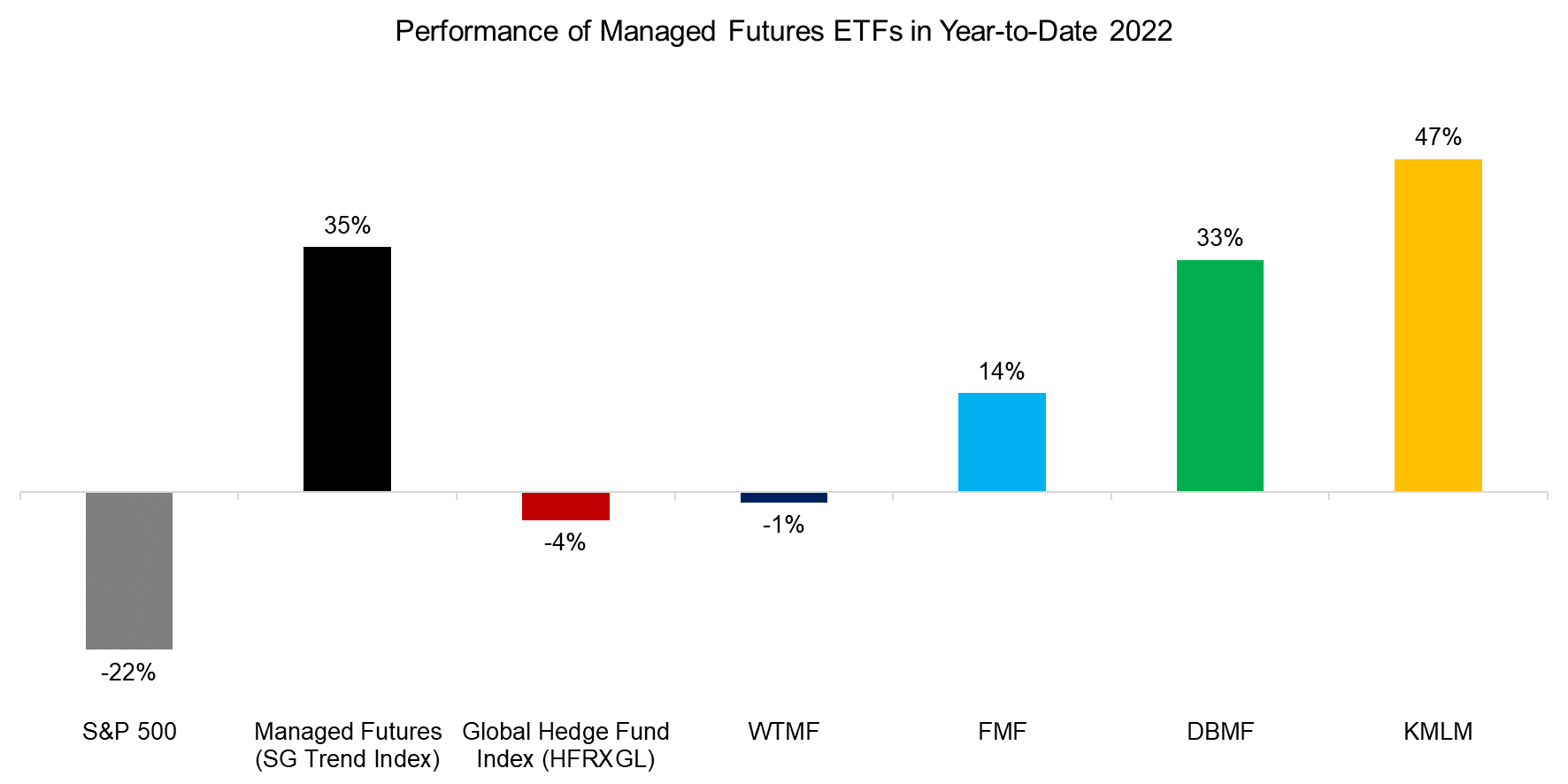
Source: Finominal
It is worth highlighting that the performance of WTMF and FMF have been disappointing over longer time periods. The SG Trend Index increased by 80% since 2013, compared to 12% for FMF and -2% for WTMF.
The poor performance of WTMF can perhaps be explained by the tactical model for the 40% equities allocation. Theoretically, equity exposure should have led to positive performance over the last decade as stock markets were up, but tactical models often failed as sharp crashes, eg March 2020, were stopped by central bank intervention. Trend followers typically exited at the bottom and re-entered post the recovery.
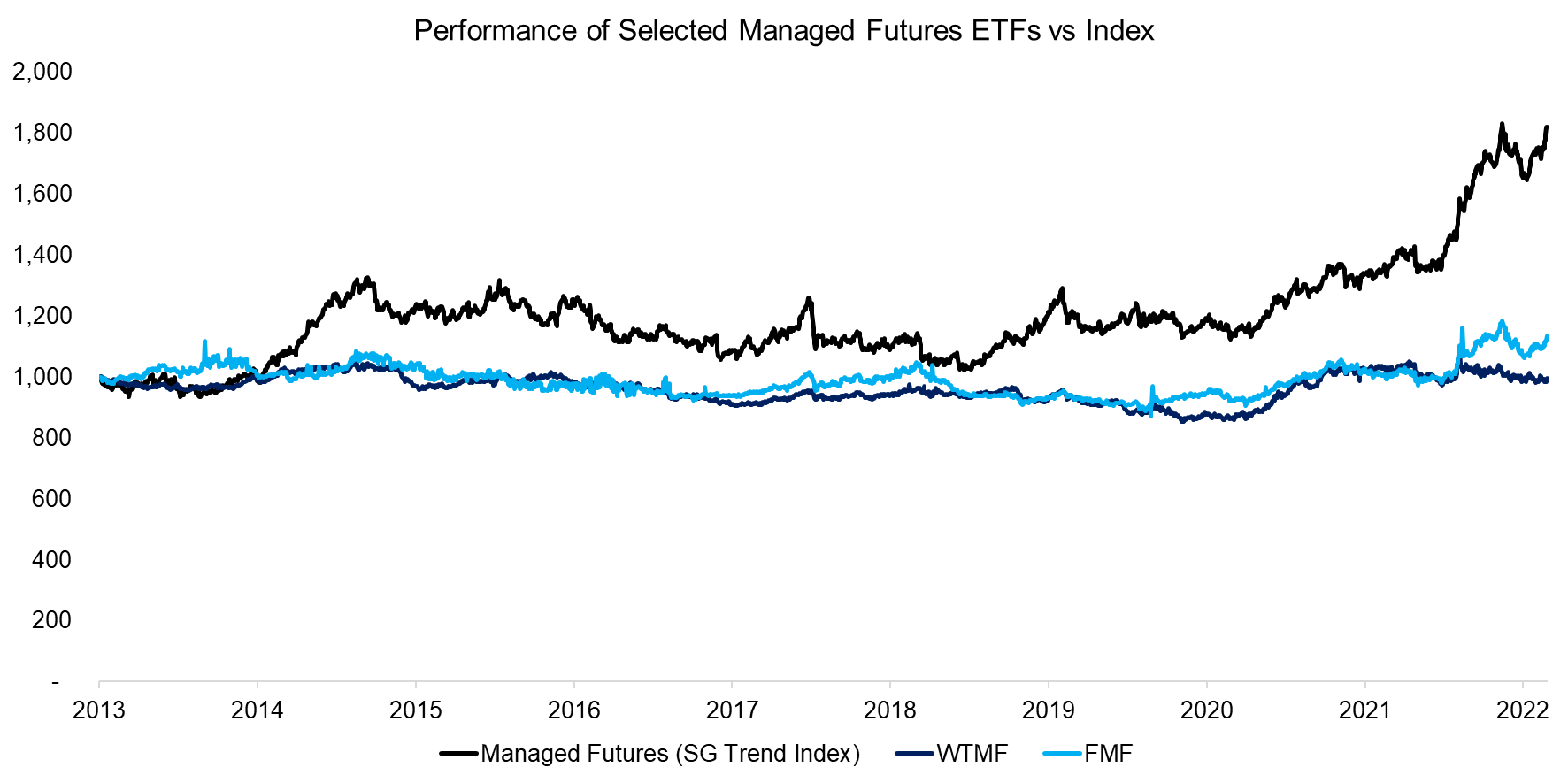
Source: Finominal
FURTHER THOUGHTS
One of the critical points when evaluating managed futures products is measuring their equity exposure. Given that most investors already have equity exposure in their portfolios, they should not double up on this as this reduces diversification benefits.
Theoretically, investors could benefit from short positions on equities during bear markets, but the nature of stock markets is such that there are long upward and short downward cycles, which are difficult to exploit as trend followers.
In contrast, commodities have long bull and bear markets, ie are less negatively skewed. The emphasis should be on CTAs (commodity trading advisors) rather than strategies that include trend-following on equities.
RELATED RESEARCH
Defensive & Diversifying Strategies in YTD 2022
Building a Diversified Portfolio for the Long-Term – Part II
60/40 Portfolios Without Bonds
A Horse Race of Liquid Alternatives
Liquid Alternatives: Alternative Enough?
Hedge Fund ETFs
Market Neutral Funds: Powered by Beta?
ABOUT THE AUTHOR
Nicolas Rabener is the CEO & Founder of Finominal, which empowers professional investors with data, technology, and research insights to improve their investment outcomes. Previously he created Jackdaw Capital, an award-winning quantitative hedge fund. Before that Nicolas worked at GIC and Citigroup in London and New York. Nicolas holds a Master of Finance from HHL Leipzig Graduate School of Management, is a CAIA charter holder, and enjoys endurance sports (Ironman & 100km Ultramarathon).
Connect with me on LinkedIn or X.

